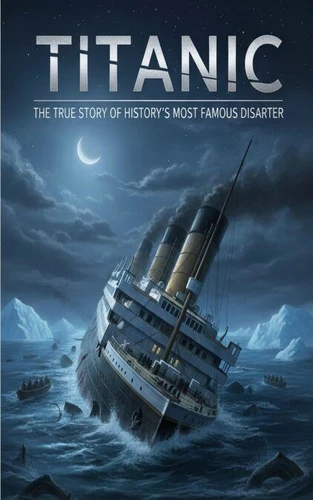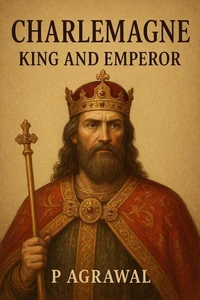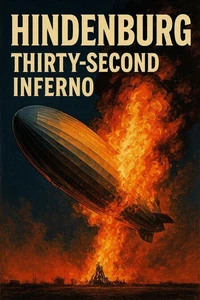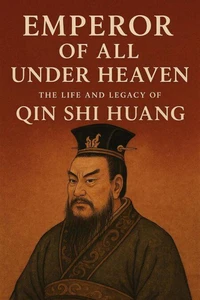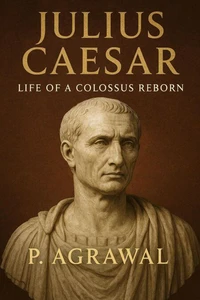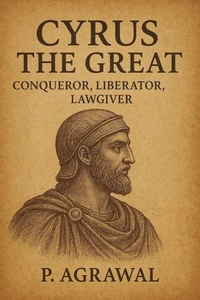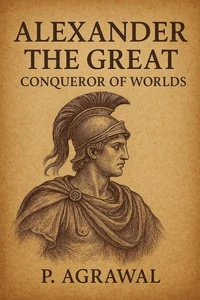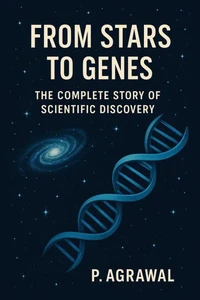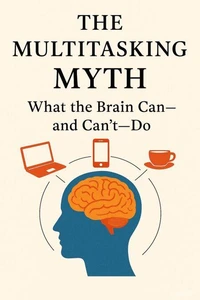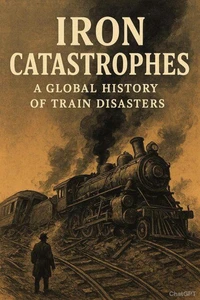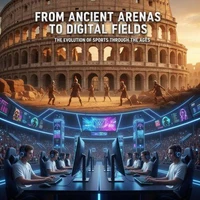Nouveauté
Titanic: The True Story of History's Most Famous Disaster
Par :Formats :
Disponible dans votre compte client Decitre ou Furet du Nord dès validation de votre commande. Le format ePub est :
- Compatible avec une lecture sur My Vivlio (smartphone, tablette, ordinateur)
- Compatible avec une lecture sur liseuses Vivlio
- Pour les liseuses autres que Vivlio, vous devez utiliser le logiciel Adobe Digital Edition. Non compatible avec la lecture sur les liseuses Kindle, Remarkable et Sony
 , qui est-ce ?
, qui est-ce ?Notre partenaire de plateforme de lecture numérique où vous retrouverez l'ensemble de vos ebooks gratuitement
Pour en savoir plus sur nos ebooks, consultez notre aide en ligne ici
- FormatePub
- ISBN8232302023
- EAN9798232302023
- Date de parution19/09/2025
- Protection num.pas de protection
- Infos supplémentairesepub
- ÉditeurHamza elmir
Résumé
Titanic: The True Story of History's Most Famous DisasterSpanning the arc from audacious dream to unforgiving ocean, this book delivers a sweeping, deeply human account of the RMS Titanic-born from Bruce Ismay's bold pivot to luxury over speed, realized through the Olympic-class vision, and immortalized by the night that changed maritime history forever. It begins in the gilded age of transatlantic travel, where national pride and industrial rivalry with Cunard set the stage for White Star's floating palaces, re-centering the voyage as an experience to savor rather than a race to win.
At the heart of the narrative stand the master architects Thomas Andrews and Alexander Carlisle, whose fusion of perfectionism and innovation produced unprecedented design features: sixteen watertight compartments, advanced wireless telegraphy, robust fire precautions, and a hybrid propulsion system marrying reciprocating engines with a central turbine for power and efficiency. The book vividly reconstructs the industrial miracle at Harland and Wolff-city-scale gantries, thousands of craftsmen, and a launch that drew over 100, 000 spectators on May 31, 1911-before following the meticulous fitting-out that transformed an empty hull into a self-contained, electric-lit metropolis at sea.
Sea trials reveal both majesty and limits-emergency stopping distances of over half a mile and a harrowing near-collision that foreshadow the precision and prudence such a giant demanded. Maiden voyage preparations come alive through tight, consequential decisions: the coal bunker fire persisting in No. 6, compressed timelines, last-minute crew reshuffles, and the notorious missing binoculars that left lookouts to their naked eyes.
Captain Edward J. Smith-"the Millionaire's Captain"-takes the bridge for a final command, while Andrews walks the decks with blueprints in hand, capturing small improvements even as the ship's grandeur gleams with finishing varnish. A panoramic cast embarks: titans like John Jacob Astor IV and Benjamin Guggenheim, the cultured and the curious, the band led by Wallace Hartley, and waves of third-class families-English Sages, Irish youths from County Mayo, Swedish settlers bound for new fields-each carrying hopes distilled into a single ticket.
The voyage's rhythms-concerts, promenades, libraries, gymnasiums, and Turkish baths-give way to the stark chronology of April 14-15: the collision, the code of "women and children first, " and the determined work of engineers and wireless operators Jack Phillips and Harold Bride as water rises around the key. In the ship's last minutes, lights flicker, steel groans, and Titanic breaks near the third funnel, the bow descending with terrible dignity while the stern rears and thrashes, separating into two tragic monuments to human ambition and error.
Final portraits endure-Andrews in the smoking room, Guggenheim dressed to "go down like a gentleman, " Ida Straus refusing to leave Isidor, Hartley's orchestra giving order and grace to chaos as the sea claims the decks. In the aftermath, global grief becomes global action: rescues, relief funds, and an unprecedented outpouring of aid, as the world elevates not just the scale of loss but the luminous courage shown aboard.
Meticulous yet cinematic, empathetic yet exacting, this book blends engineering mastery, boardroom strategy, shipyard muscle, and intimate biography to reveal Titanic not as a single mistake but as a convergence of choices, conditions, and character that still speaks to modern risk, responsibility, and resolve.
At the heart of the narrative stand the master architects Thomas Andrews and Alexander Carlisle, whose fusion of perfectionism and innovation produced unprecedented design features: sixteen watertight compartments, advanced wireless telegraphy, robust fire precautions, and a hybrid propulsion system marrying reciprocating engines with a central turbine for power and efficiency. The book vividly reconstructs the industrial miracle at Harland and Wolff-city-scale gantries, thousands of craftsmen, and a launch that drew over 100, 000 spectators on May 31, 1911-before following the meticulous fitting-out that transformed an empty hull into a self-contained, electric-lit metropolis at sea.
Sea trials reveal both majesty and limits-emergency stopping distances of over half a mile and a harrowing near-collision that foreshadow the precision and prudence such a giant demanded. Maiden voyage preparations come alive through tight, consequential decisions: the coal bunker fire persisting in No. 6, compressed timelines, last-minute crew reshuffles, and the notorious missing binoculars that left lookouts to their naked eyes.
Captain Edward J. Smith-"the Millionaire's Captain"-takes the bridge for a final command, while Andrews walks the decks with blueprints in hand, capturing small improvements even as the ship's grandeur gleams with finishing varnish. A panoramic cast embarks: titans like John Jacob Astor IV and Benjamin Guggenheim, the cultured and the curious, the band led by Wallace Hartley, and waves of third-class families-English Sages, Irish youths from County Mayo, Swedish settlers bound for new fields-each carrying hopes distilled into a single ticket.
The voyage's rhythms-concerts, promenades, libraries, gymnasiums, and Turkish baths-give way to the stark chronology of April 14-15: the collision, the code of "women and children first, " and the determined work of engineers and wireless operators Jack Phillips and Harold Bride as water rises around the key. In the ship's last minutes, lights flicker, steel groans, and Titanic breaks near the third funnel, the bow descending with terrible dignity while the stern rears and thrashes, separating into two tragic monuments to human ambition and error.
Final portraits endure-Andrews in the smoking room, Guggenheim dressed to "go down like a gentleman, " Ida Straus refusing to leave Isidor, Hartley's orchestra giving order and grace to chaos as the sea claims the decks. In the aftermath, global grief becomes global action: rescues, relief funds, and an unprecedented outpouring of aid, as the world elevates not just the scale of loss but the luminous courage shown aboard.
Meticulous yet cinematic, empathetic yet exacting, this book blends engineering mastery, boardroom strategy, shipyard muscle, and intimate biography to reveal Titanic not as a single mistake but as a convergence of choices, conditions, and character that still speaks to modern risk, responsibility, and resolve.
Titanic: The True Story of History's Most Famous DisasterSpanning the arc from audacious dream to unforgiving ocean, this book delivers a sweeping, deeply human account of the RMS Titanic-born from Bruce Ismay's bold pivot to luxury over speed, realized through the Olympic-class vision, and immortalized by the night that changed maritime history forever. It begins in the gilded age of transatlantic travel, where national pride and industrial rivalry with Cunard set the stage for White Star's floating palaces, re-centering the voyage as an experience to savor rather than a race to win.
At the heart of the narrative stand the master architects Thomas Andrews and Alexander Carlisle, whose fusion of perfectionism and innovation produced unprecedented design features: sixteen watertight compartments, advanced wireless telegraphy, robust fire precautions, and a hybrid propulsion system marrying reciprocating engines with a central turbine for power and efficiency. The book vividly reconstructs the industrial miracle at Harland and Wolff-city-scale gantries, thousands of craftsmen, and a launch that drew over 100, 000 spectators on May 31, 1911-before following the meticulous fitting-out that transformed an empty hull into a self-contained, electric-lit metropolis at sea.
Sea trials reveal both majesty and limits-emergency stopping distances of over half a mile and a harrowing near-collision that foreshadow the precision and prudence such a giant demanded. Maiden voyage preparations come alive through tight, consequential decisions: the coal bunker fire persisting in No. 6, compressed timelines, last-minute crew reshuffles, and the notorious missing binoculars that left lookouts to their naked eyes.
Captain Edward J. Smith-"the Millionaire's Captain"-takes the bridge for a final command, while Andrews walks the decks with blueprints in hand, capturing small improvements even as the ship's grandeur gleams with finishing varnish. A panoramic cast embarks: titans like John Jacob Astor IV and Benjamin Guggenheim, the cultured and the curious, the band led by Wallace Hartley, and waves of third-class families-English Sages, Irish youths from County Mayo, Swedish settlers bound for new fields-each carrying hopes distilled into a single ticket.
The voyage's rhythms-concerts, promenades, libraries, gymnasiums, and Turkish baths-give way to the stark chronology of April 14-15: the collision, the code of "women and children first, " and the determined work of engineers and wireless operators Jack Phillips and Harold Bride as water rises around the key. In the ship's last minutes, lights flicker, steel groans, and Titanic breaks near the third funnel, the bow descending with terrible dignity while the stern rears and thrashes, separating into two tragic monuments to human ambition and error.
Final portraits endure-Andrews in the smoking room, Guggenheim dressed to "go down like a gentleman, " Ida Straus refusing to leave Isidor, Hartley's orchestra giving order and grace to chaos as the sea claims the decks. In the aftermath, global grief becomes global action: rescues, relief funds, and an unprecedented outpouring of aid, as the world elevates not just the scale of loss but the luminous courage shown aboard.
Meticulous yet cinematic, empathetic yet exacting, this book blends engineering mastery, boardroom strategy, shipyard muscle, and intimate biography to reveal Titanic not as a single mistake but as a convergence of choices, conditions, and character that still speaks to modern risk, responsibility, and resolve.
At the heart of the narrative stand the master architects Thomas Andrews and Alexander Carlisle, whose fusion of perfectionism and innovation produced unprecedented design features: sixteen watertight compartments, advanced wireless telegraphy, robust fire precautions, and a hybrid propulsion system marrying reciprocating engines with a central turbine for power and efficiency. The book vividly reconstructs the industrial miracle at Harland and Wolff-city-scale gantries, thousands of craftsmen, and a launch that drew over 100, 000 spectators on May 31, 1911-before following the meticulous fitting-out that transformed an empty hull into a self-contained, electric-lit metropolis at sea.
Sea trials reveal both majesty and limits-emergency stopping distances of over half a mile and a harrowing near-collision that foreshadow the precision and prudence such a giant demanded. Maiden voyage preparations come alive through tight, consequential decisions: the coal bunker fire persisting in No. 6, compressed timelines, last-minute crew reshuffles, and the notorious missing binoculars that left lookouts to their naked eyes.
Captain Edward J. Smith-"the Millionaire's Captain"-takes the bridge for a final command, while Andrews walks the decks with blueprints in hand, capturing small improvements even as the ship's grandeur gleams with finishing varnish. A panoramic cast embarks: titans like John Jacob Astor IV and Benjamin Guggenheim, the cultured and the curious, the band led by Wallace Hartley, and waves of third-class families-English Sages, Irish youths from County Mayo, Swedish settlers bound for new fields-each carrying hopes distilled into a single ticket.
The voyage's rhythms-concerts, promenades, libraries, gymnasiums, and Turkish baths-give way to the stark chronology of April 14-15: the collision, the code of "women and children first, " and the determined work of engineers and wireless operators Jack Phillips and Harold Bride as water rises around the key. In the ship's last minutes, lights flicker, steel groans, and Titanic breaks near the third funnel, the bow descending with terrible dignity while the stern rears and thrashes, separating into two tragic monuments to human ambition and error.
Final portraits endure-Andrews in the smoking room, Guggenheim dressed to "go down like a gentleman, " Ida Straus refusing to leave Isidor, Hartley's orchestra giving order and grace to chaos as the sea claims the decks. In the aftermath, global grief becomes global action: rescues, relief funds, and an unprecedented outpouring of aid, as the world elevates not just the scale of loss but the luminous courage shown aboard.
Meticulous yet cinematic, empathetic yet exacting, this book blends engineering mastery, boardroom strategy, shipyard muscle, and intimate biography to reveal Titanic not as a single mistake but as a convergence of choices, conditions, and character that still speaks to modern risk, responsibility, and resolve.

